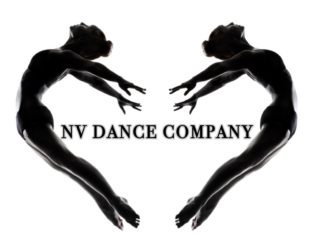Ballet Level I: Ages 5-6
Students perform all exercises facing the barre, holding the barre with both hands. Later, the barre is held with one hand and the exercises are done alternately with the right and the left leg for the correct adaptation of turn-out. All level 1 classes are strongly encouraged to participate in the scheduled performances.
Ballet Level II: Ages 7-8
Repetition of the exercises already learned is done in a greater quantity and at a faster tempo focusing on the development of leg strength and the insteps by means of alternating movements. Instructors strive to make the enchaînements challenging, interesting, both mentally and physically, while always keeping in mind the development of the dancer as a whole. All level 2 classes are required to participate in the scheduled performances.
Ballet Level III: Ages 9-12
Dancers perform exercises on demi-pointe and ¾ pointe and movements’ en tournant. Level III is the beginning of the study of turns (pirouettes,) sur le cou-de-pied, and retire. The introduction of simple beats (batterie), to include some acceleration of tempo in comparison with the second year of study. All level 3 classes are required to participate in the scheduled performances. Pre pointe shoes will be considered at this level up at the discretion of the teacher.
Ballet Level IV/Pointe: Ages 12+
Students build their vocabulary with a new set of specific exercises at the barre and in the centre. At this level an emphasis is placed on detail and artistry, therefore, increasing stamina, concentration and discipline are required. Dancers will learn to communicate expression and feeling in their movement. Students are now expected to show a clear understanding of stylistic and rhythmical nuances. Pointe shoes will be considered at this level up at the discretion of the teacher.
Pointe
All pointe classes are designed for students with previous ballet training. Students will utilize previously learned ballet technique while working in pointe shoes. Each class includes barre exercises, center floor work and across the floor combinations. These exercises focus on strengthening the feet and ankles.
Lyrical/Contemporary
Lyrical dance is a dance style that embodies various aspects of ballet, jazz, acrobatics, and modern dance. Lyrical dance is strongly associated with clearly displayed emotional moods, fast-moving choreographic strategies, emphasis on virtuosic display, illustration of song lyrics, and, in group form, exact unison. The style is usually danced at a faster pace than ballet but not as fast as jazz. Lyrical dance is a category typically found in dance competitions.
Jazz
Jazz follows a structured sequence of training stages designed to increase technical skills, stamina, and discipline in accordance with students’ age and physical development. The program incorporates technique, character dance, isolations, chassé, axel turn, attitude axel turns, fuete turns, straight leg turns, ball change, drop, extension, coupé, double-bounce, drop/fall, fondue, piqué, conditioning, and musicality. As students master each skill and progress, the classes become increasingly challenging.
Hip Hop
Hip-hop is an upbeat urban style of dance that is forever evolving. It is a fast-moving style of dance as seen in all forms of media. Coordination, rhythm, flexibility, and improvisation are taught. This high energy class consists of rap, hip-hop and pop sounds, focusing on musicality and rhythm in this popular and familiar form of stylized American Dance.
Tap
Tap is a unique style of dance involving specific and rapid footwork. The dancer’s foot and shoe essentially act as a drum, and each part of the shoe makes a particular beat and sound. Tap utilizes rhythm, syncopation, and sound in addition to movement. An emphasis is placed on musicality and expression.
